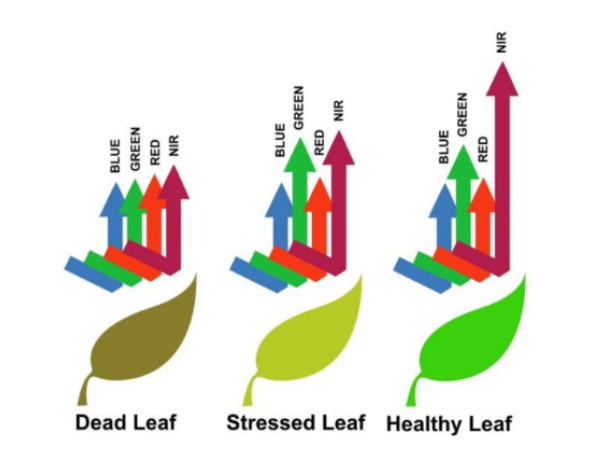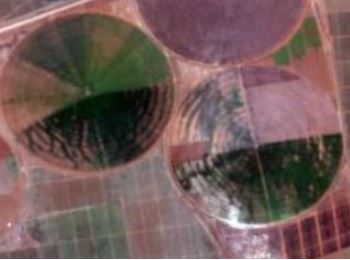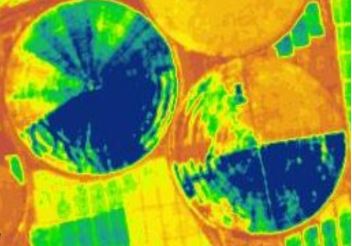
Part 1 – What is Vegetation Stress and the Importance of Monitoring
Remote sensing sensors on board satellites have the ability to capture data showing the interaction of vegetation with sunlight during photosynthesis and this data can be manipulated for vegetation analysis to determine health and stress.

As any Farmer or Forester will tell you, conditions within your field or compartment can change either rapidly (such as in disaster events like hail storms, fires or pest attack) or subtly (as in the case of some diseases, or water and nutrient deficiency). For this reason it is important to be able to frequently and cost-effectively monitor and run analytics on your resources to be able to detect when this happens be it on a large or small scale. The Planet constellation of satellites ranging from 3m (PlanetScope) to 80cm (Skysat) resolution make it possible to do just that on a daily, weekly, monthly or whatever time frame works best for you.
Agriculture

RGB View

Water Stress

Health Stress
Forestry

RGB View

Health Stress
Usual practice for both forestry and agriculture (usually due to the large size and number of areas) is to run average analytics such as NDVI on a compartment or field or pivot and have that compared to the rest of the farm, estate or plantation. Alerts are then usually triggered for compartments that have a much lower average NDVI value compared to the others and field teams are then sent out to assess what the reason is and apply the appropriate action.
But what happens when the average NDVI reading for the compartment is high but there is a small patch somewhere in the compartment or field that is much lower due to a brewing problem?




Sometimes the problem is not picked up until the effect is quite significant and by then the consequences may be too high. Examples of this scenario would be the start of a disease outbreak affecting perhaps one tree or a few trees in a compartment or a portion of the field or part of a pivot not receiving enough water due to blockage or a nutrition deficiency. In essence these specific areas will be under stress and exhibit a lower NDVI reading but because the rest of the compartment has high values the average NDVI will mask this anomaly. For this reason it is important to investigate beyond the average field/compartment value and try to run some in-field analysis. This will be covered in detail in the next part of this vegetation monitoring series.
Up Next…
Part 2 – How to leverage constant monitoring and in-field analysis
